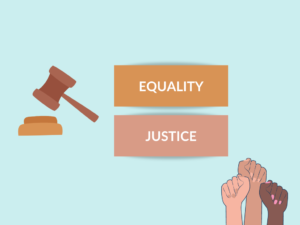Rainbow Colors vs LGBT Flag
Colors have always played a significant role in human society, often representing different meanings and symbols. Two prominent examples are rainbow colors and the LGBT flag. While they share some similarities, they also possess distinct characteristics. In this article, we will explore the differences between these two, including their definitions, examples, uses, and more.
What are Rainbow Colors?
Rainbow colors refer to a range of hues that are visible in a natural rainbow. They include red, orange, yellow, green, blue, indigo, and violet. These colors are produced by the dispersion of light as it passes through water droplets in the atmosphere, resulting in a spectrum of colors.
Examples of Rainbow Colors:
Examples of rainbow colors can be found in various natural phenomena, such as rainbows, color spectrums, and prisms. Additionally, many objects and artworks incorporate these colors to depict vibrance, diversity, and positivity.
Uses of Rainbow Colors:
Rainbow colors are commonly used in design, fashion, and arts to evoke cheerful and optimistic emotions. They are often associated with diversity, harmony, and inclusivity. Additionally, rainbow-colored flags or symbols are frequently adopted as a sign of support for various causes, movements, or communities.
What is the LGBT Flag?
The LGBT flag, also known as the rainbow flag, represents the lesbian, gay, bisexual, and transgender (LGBT) community. It consists of six colors: red, orange, yellow, green, blue, and violet. Each color carries a specific meaning related to the LGBT movement, such as life, healing, sunlight, nature, art, and spirit.
Examples of the LGBT Flag:
The most common example of the LGBT flag is the famous six-stripe representation. It is often displayed during pride parades, events, and within LGBT community spaces. Variations of the flag can also be found, including designs with additional colors or symbols specific to certain subsets of the LGBT community.
Uses of the LGBT Flag:
The LGBT flag is a powerful symbol of pride, acceptance, and solidarity within the LGBT community. It is prominently used during LGBT pride events and celebrations, as well as for advocacy, awareness, and visibility. The flag serves as a representation of the struggles, achievements, and ongoing fight for equal rights.
Differences Table:
| Difference Area | Rainbow Colors | LGBT Flag |
|---|---|---|
| Meaning | Represents a natural phenomenon and diversity in general. | Symbolizes the LGBT community, pride, and equality. |
| Color Composition | Red, orange, yellow, green, blue, indigo, and violet. | Red, orange, yellow, green, blue, and violet. |
| Origin | Naturally occurring colors in rainbows. | Designed by artist Gilbert Baker in 1978. |
| Specific Community | Not associated with any particular community. | Represents the LGBT community. |
| Symbolism | Depicts diversity, harmony, and inclusivity. | Signifies pride, acceptance, and equality. |
| Popular Usage | Widely used in design, fashion, and arts. | Prominently displayed during LGBT pride events. |
| Community Support | Not specifically associated with any community. | Signifies support for the LGBT community. |
| Societal Impact | Generally appreciated for its colorful representation. | Recognized as a symbol of the LGBT movement. |
| Representation | Depicts nature’s diversity and color spectrum. | Represents LGBT individuals and their rights. |
| Historical Significance | Not specifically associated with any historical event. | Has a historical connection to the LGBT movement. |
Conclusion:
In summary, rainbow colors and the LGBT flag have both similarities and differences. Rainbow colors represent natural diversity, while the LGBT flag symbolizes the LGBT community’s pride and struggle for equality. The rainbow colors are generally appreciated for their vibrant representation, whereas the LGBT flag holds deep historical significance and serves as a powerful symbol within the community.
People Also Ask:
1. What do rainbow colors represent?
Rainbow colors represent natural diversity, harmony, and inclusivity.
2. What does the LGBT flag stand for?
The LGBT flag stands for the lesbian, gay, bisexual, and transgender community, pride, and equality.
3. Can rainbow colors be used as a symbol for the LGBT community?
Rainbow colors are sometimes used as a symbol of support for the LGBT community, but the specifically designed LGBT flag is more commonly associated with the community.
4. Who designed the LGBT flag?
The LGBT flag was designed by artist Gilbert Baker in 1978.
5. What does the LGBT flag represent?
The LGBT flag represents the struggles, achievements, and ongoing fight for equal rights within the LGBT community.


